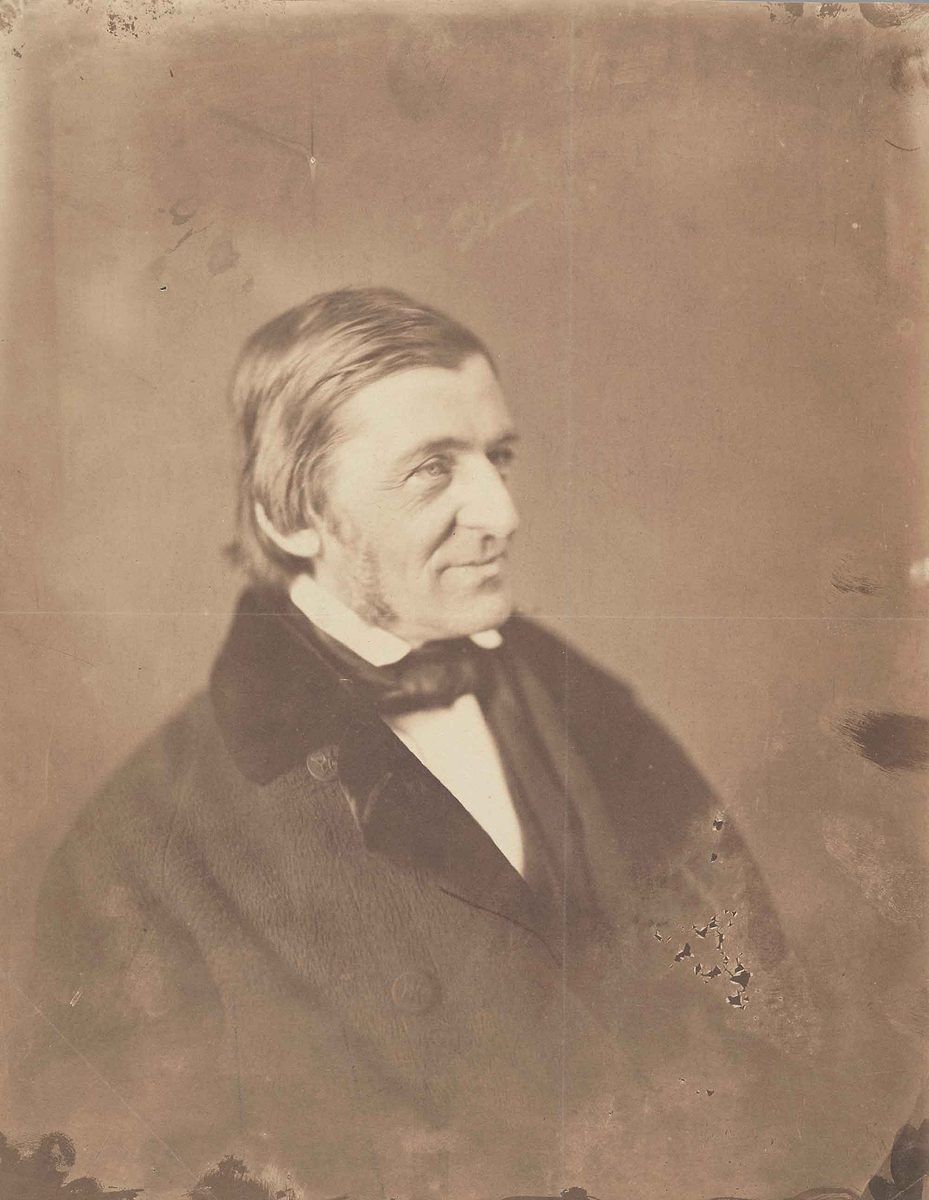Ralph Waldo Emerson was not the originator of the romantic ideals known as Transcendentalism. Nor was his premier essay, Nature (1836), the first publication to set forth the philosophy. Emerson was, rather, the most successful public voice of New England Transcendentalism in the nineteenth century. Dissatisfied with his traditional ministry, Emerson embarked on an untried profession as a lecturer, essayist, and poet; gaining an international reputation. His eloquent and provocative prose resonated with a young American republic yearning to define itself against the time-honored past. Emerson turned his personal search for meaning into a national paean for a self-actualized identity. Nature was closely followed by his controversial “American Scholar,” “Divinity School Address,” and iconic “Self-Reliance.”
Preaching the divinity of nature, intuitive truth, and the sacredness of the individual mind, Emerson led a revolution in thought from his ancestral home-place in Concord, Massachusetts, itself steeped in legacies of “American Independence.” With his call, “Trust thyself … Nothing is at last sacred but the integrity of your own mind,” Emerson transformed the esoteric mysticism of Transcendentalism into an accessible popular culture, philosophically reforming the relationship between the individual and society. “The power” of the intuitive individual who rises above conventional expectations, Emerson declared, was a new and limitless, yet natural relation.1

Emerson House
Emerson intentionally made his Concord home into a geographical center for American Transcendentalism. The house was conveniently located on the Cambridge Turnpike, approximately twenty miles from Boston by road or train.There he authored his works and gathered other original voices. The Emerson family hosted meetings and lectures, welcoming thinkers, activists, and enthusiasts as guests and intimates. Close to the intellectual stimulation of the city, but rural enough to evoke pastoral imaginings, Emerson sought to form a community of romantic writers and thinkers in Concord. He invited the Alcotts, Hawthornes, Margaret Fuller, and Thoreau, among others, to reside with him or settle nearby in living situations he facilitated with his connections and income.
Located down the road from Louisa May Alcott’s Orchard House, where Little Women was written, and across the street from the Concord Museum, the simple, yet refined and stately Emerson house is now a not-for-profit museum with an extensive collection of original artifacts, managed by the Ralph Waldo Emerson Memorial Association. Emerson’s life offers us an example of principled living and generosity of spirit; his words remind us of our oneness with nature, of revolutionary impulse, and the sacred integrity of our own minds.
Recommended for further reading: Robert D. Richardson, Jr., Emerson: The Mind on Fire (University of California Press, 1995).
1”Self-Reliance”, Essay [First Series] (1841). “The American Scholar” was delivered in 1837 and “Divinity School Address” in 1838.
Photos from commons.wikimedia.org


